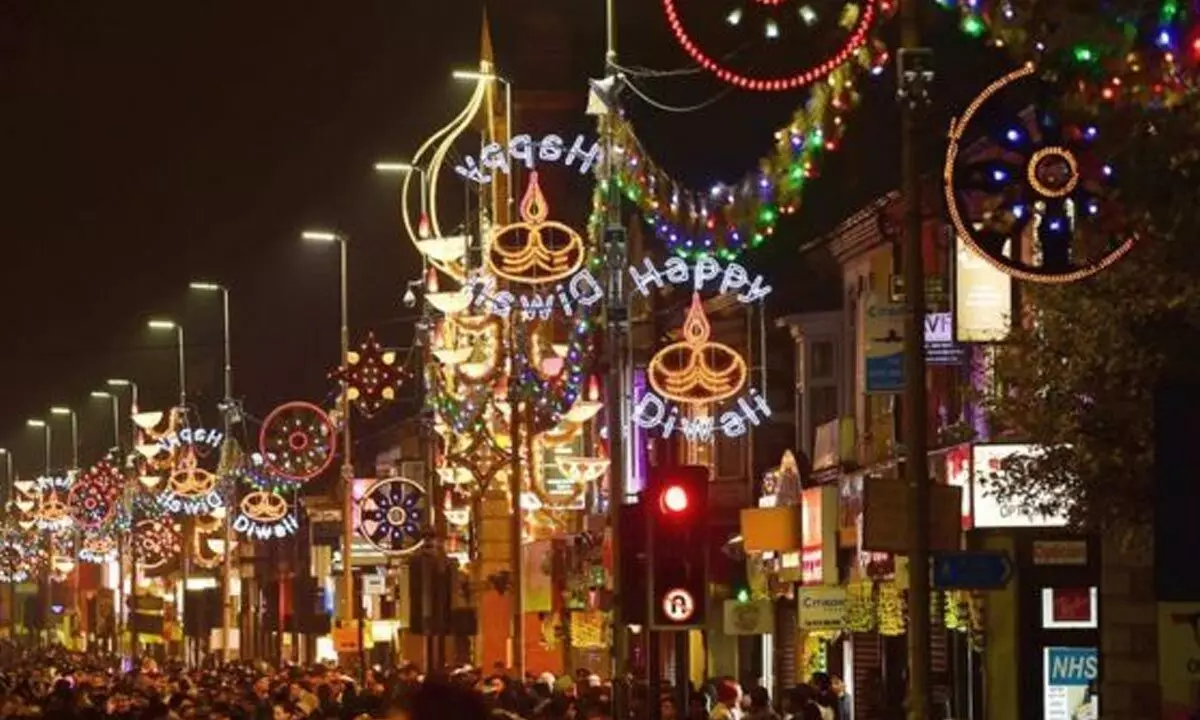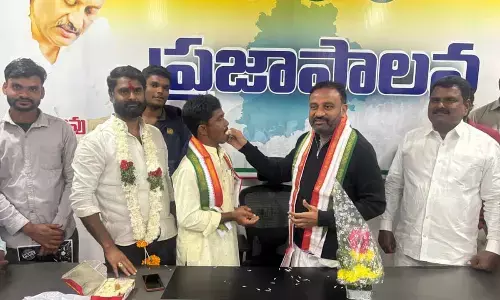Spreading light beyond borders, barriers

Diwali, the festival of lights, is here again. Although It was a subject of an article in this column two years ago, I thought approaching it from a somewhat different angle might prove rewarding.
Diwali, the festival of lights, is here again. Although It was a subject of an article in this column two years ago, I thought approaching it from a somewhat different angle might prove rewarding.
‘Diwali’, or ‘Deepavali’, is India's biggest, and most important, festival. The name refers to the row of clay lamps (deepas) that Indians light, outside their homes, to symbolise the inner light that protects one from spiritual darkness.
Originally a Hindu festival, Diwali, has, over the centuries, become a national festival that is also enjoyed by other religion too, albeit with some variations. It symbolises the spiritual victory of light over darkness, good over evil, and knowledge over ignorance
For Jains, it is Diwali which marks the final liberation of Mahavira, while the Sikhs celebrate Bandi Chhor Divas, to mark the release of Guru Hargobind, from a Mughal prison. Newar Buddhists, unlike other Buddhists, celebrate Diwali by worshipping Lakshmi, while the Hindus of Eastern India and Bangladesh generally celebrate it by worshipping Goddess Kali.
Diwali has, increasingly, attracted cultural exchanges, becoming on occasion for politicians, and religious leaders, worldwide, to meet Hindu or Indian origin citizens, diplomatic staff or neighbours. The Catholic Dica stery Pontifical Council for Interreligious Dialogue, founded by Pope Paul VI, has begun to send official Diwali greetings, along with the Pope's message, to Hindus.
Many governments encourage, or sponsor, Diwali-related festivities in their territories. For example, the government of Singapore, in association with the Hindu Endowment Board of Singapore, organises many cultural events during Diwali every year.
Likewise, national and civic leaders, such as the former Prince Charles, have attended Diwali celebrations at prominent Hindu temples in the UK, such as the Swaminarayan Temple in Neasden, using the occasion to highlight contributions of the Hindu community to British society. Since 2009, Diwali is also celebrated, every year, at 10 Downing Street, the residence of the British Prime Minister. Similarly, Diwali was first celebrated, in the White House, where the President of the United States of America resides, by George W. Bush in 2003 and its religious and historical significance was officially recognized by the United States Congress in 2007. Barack Obama became the first President personally to attend Diwali, at the White House in 2009. On the eve of his first visit to India as President of the United States, Obama also released an official statement conveying his best wishes to those celebrating Diwali.
In another endearing custom, every year, during Diwali, Indian Armed Forces approach their Pakistani counterparts at the border bearing gifts of traditional Indian confectionery, a gesture that is returned in kind by the Pakistani soldiers, who give Pakistani sweets to the Indian soldiers.
Lights also play every unique role in the tradition followed, of lighting a 1000 oil lamps at the Thousand Lights mosque situated in Anna Salai, Chennai. Prior to the construction of the mosque, in 1810, by the Nawab of Arcot, there was an Assembly Hall at the same site, to illuminate which, the lamps had to be lit. It is one of the largest mosques India and a revered place of worship for Shia Muslims.
Interestingly, Zigong city, in Sichuan province, of Southwest China, is also called the City of Thousand Lights. It is famous for its lanterns, which have been made for thousands of years, by artisans, on account of the belief that lanterns light people’s way to prosperity. In the summer vacation of 1962, while I was studying as an undergraduate in Hindu College of Delhi University, I spent a few days at Shimla, staying with my uncle Krishnamurthy. Itching for adventure my cousin, Achut and I set off for a hike to Hattu peak, largely on the basis of the attraction we felt, after reading some brochures brought out by the Himachal State government’s tourist department. We took a bus to Narkanda village, some 60 km away, and camp there for the night, in a wayside ‘Dhaba’. We set out for our expedition, the next morning, armed primarily with enthusiasm, a total ignorance of the art of mountaineering, and no inkling, whatsoever, of what there was in store for us! And, given the additional advantage we enjoyed, of having no guide, we unerringly landed on the wrong side of the mountain! There was no regular track to climb to the peak from that point and we had to depend, on stones and branches of plants, for foothold and leverage, while making our way up. Somehow or other, reach the top, bruised, bleeding, thirsty, and hungry. Needless to say, our stocks contained no food or water either! But, there was plenty of compensation, for our deprivation and suffering, and more, in the breathtakingly magnificent view we enjoyed, of the peaks of the Himalaya mountains, in the distance, from the top. When enjoyment yielded to rediscovering the pangs of anger and thirst, we were fortunate to hear voices, from the other side of the mountain, where a unit of the Indian Army was located. The officers and the men were extraordinarily courteous. After administering first aid to us, they fed us, and generously stocked us with things we might need, on the journey back to Shimla, and bade us a hearty farewell. To this day, Achut and I cherish the wonderful view we enjoyed from the top, with memories of the suffering and pain fading away in comparison.
Our feelings, upon experiencing the captivating view of the snow-clad mountains, in a 360° arc all around us, were similar to those which the character, David Bowman, must have felt, in Arthur C Clarke’s futuristic novel ‘2010- A Space Odyssey Two’. As the spacecraft, ‘Discovery One’, enters the Star Gate, he sees stars rushing past his field of vision as though he is moving incredibly quickly. The Star Gate, however, never comes any closer, as time has virtually come to a halt on account of his velocity. As a matter of fact, Bowman had actually traveled through a ‘wormhole’ in space time.
The subject of light has also been a favourite with poets. We have, for instance, the hymn, by St John Henry Newman, which goes as follows:
Lead, kindly light, amid the
encircling gloom
Lead thou me on
The night is dark, and I am far from home
Lead thou me on
Keep thou my feet, I do not ask to see
The distant scene, one step enough for me
- Hymn by St. John Henry Newman
A reference to lights never fails to remind me of the thrill I felt as a probationer under training at the National Academy of Administration, at Mussoorie, as I watched Dehradun city, thousands of feet down below, suddenly come alive with a million lights spontaneously coming on, while it was still daylight at Mussoorie.
Another natural marvel that illustrates the ability, of light, to create phenomena that fascinate, and captivate, people, is the ‘aurora borealis’ or the northern lights, whose beautiful dancing waves of light have captivated people for millennia. It was Italian astronomer Galileo Galilei who originally coined the name "aurora borealis" in 1619 – after the Roman Goddess of Dawn, Aurora, and the Greek God of the north wind, Boreas. There are southern lights, too, with the dramatic process transforming into a cinematic atmospheric phenomenon, that dazzles and fascinates, scientists and sky watchers alike.
References to light emitting and illuminating electrical appliances are often used to describe human qualities. A person who is slow on the uptake is, for example, often known as a ‘tube light’, on account of the propensity of that particular appliance to blink, several times, to begin with, before it gets fully switched on!
(The writer is formerly Chief Secretary, Government of Andhra Pradesh)


















